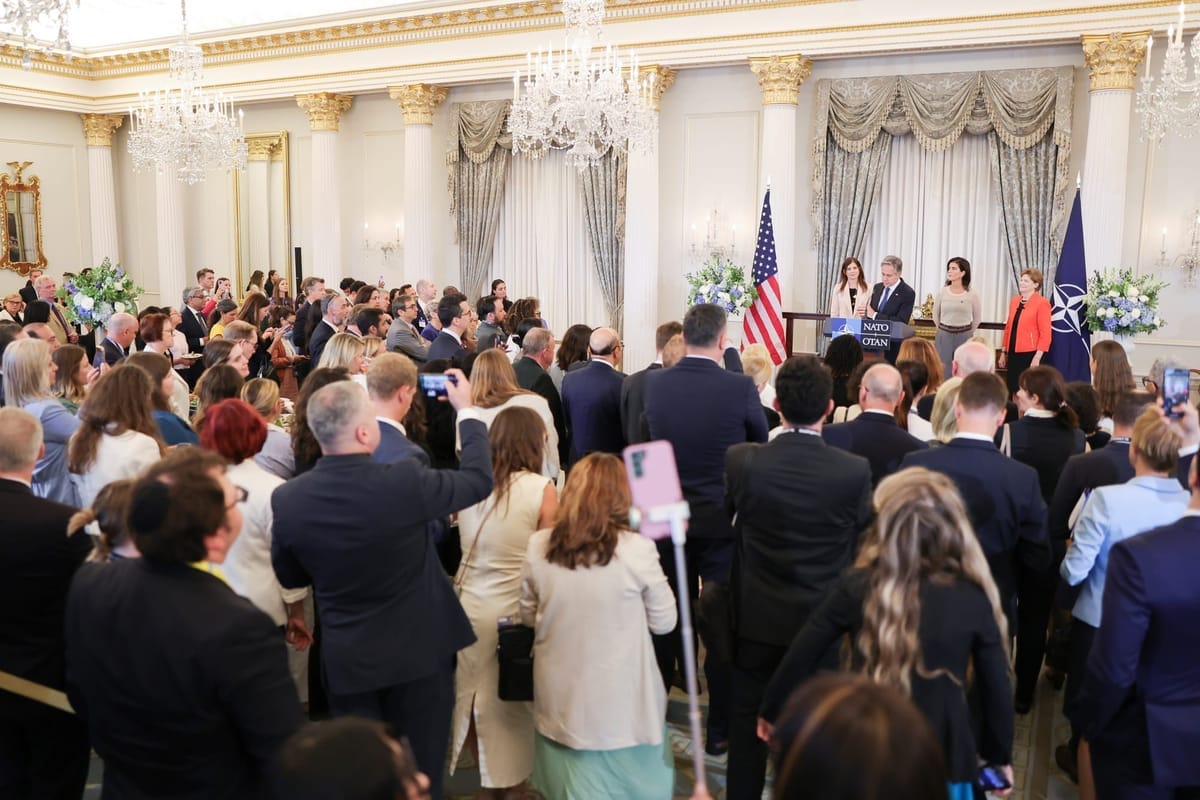Distracting From the Task of ‘War-Fighting?’ Good Grief.
Canceling the Women, Peace and Security Act might seem like no big deal. But it’s a very big deal. And such a waste.

Late last month, Pete Hegseth, the U.S. Secretary of Defense, proudly announced on social media (X to be exact) that he had ended the Women, Peace and Security (WPS) program inside the Department of Defense. You’d be forgiven if you missed the announcement, goodness knows there’s been a lot going on.
But if you did miss it, here’s a refresher. On X, Hegseth wrote:
“WPS is yet another woke divisive/social justice/Biden initiative that overburdens our commanders and troops — distracting from our core task: WAR-FIGHTING."
He went on:
“WPS is a UNITED NATIONS program pushed by feminists and left-wing activists. Politicians fawn over it; troops HATE it.
DoD will hereby executive [sic] the minimum of WPS required by statute, and fight to end the program for our next budget.
GOOD RIDDANCE WPS!”
What Hegseth obviously doesn’t know—or hasn’t bothered to learn; or indeed perhaps prefers not to know—is that the Women, Peace and Security (WPS) Act was signed into law by the president he currently serves. It is not only directly related to the Department’s war-fighting efforts, but it is also critical to its operational effectiveness.
The Power of Women, Peace and Security
The mission of WPS is to promote a more stable, peaceful, and just world by focusing on the important role women play in preventing conflict, building peace, and addressing global threats. This law builds on a framework established at the United Nations decades ago, designed to elevate the role of women in all areas of peace and security, from participating in peace processes to preventing sexual violence in armed conflict and much more.
This may seem like little more than a feel-good law, but it’s not. It’s strategic: It’s a low-cost, high-impact way to increase peace and stability in the world.
This may seem like little more than a feel-good law, but it’s not. It’s strategic: It’s a low-cost, high-impact way to increase peace and stability in the world, to protect women and girls from violence, to enhance military operations, and to strengthen America’s relationship with allies.
To put some context around this, Women, Peace and Security experts in the Defense Department have, in recent years, trained personnel on the roles that women play in conflict and peace-building; conducted demographic analyses to inform operations so U.S. troops are more likely to succeed on the ground; advised on ways to reduce sexual violence against women and girls; countered violent extremist narratives and prevented trafficking.
All of these efforts have cost less than $3 million in the last 4 years.
Signed Into Law By Trump
Donald Trump knew how critical WPS was when he, as president, signed the WPS Act into law in 2017. (Somehow WPS wasn’t quote-unquote “woke divisive” back then.) And Marco Rubio and Kristi Noem knew this when they co-sponsored the bill in Congress, during their respective tenures in the Senate and the House of Representatives. Leaders within the Defense Department, including in combatant commands and the Joint Staff, know it now and have recommended via a memo to Hegseth that the Department keep robust WPS implementation as part of its work.
The truth is, we may never quite know what motivated Hegseth to pare back WPS, though C-FAM, a right-wing advocacy group, argued that WPS was “in conflict with Trump’s commitment to avoid diversity, equity, and inclusion initiatives” as well as “at odds” with Trump’s commitment to “eradicate gender ideology.”
The U.S. Is Hardly Alone
The U.S. is hardly an outlier with its WPS initiative. Currently, over 100 countries have National Action Plans to advance WPS including Denmark, Rwanda, El Salvador, Palestine and Armenia, Liberia, Chile, Kyrgyzstan, Iraq, Sudan, South Africa, U.A.E. (Should we go on? We could.) By contrast, countries that don’t follow a WPS National Action Plan include some of the world’s worst offenders of human rights, like Burma and Nicaragua.
We know that when women are involved in peace negotiations, peace is more likely to last. This has been backed up by research and data for decades.
And what else?
Well, we’re getting tired of pointing this out over and over again, but women’s leadership in the military isn’t just the right thing, it’s the smart thing.
In Iraq and Afghanistan, female soldiers played key roles from combat to community engagement to intelligence gathering. In fact, the U.S. military created all-women Female Engagement Teams because women could build relationships with local populations and gain access in ways that many soldiers could not. It was WPS staff that played a critical role in evacuating American allies from Afghanistan. This underscores why WPS—understanding women’s roles in society and how to position them as leaders—is key to the military’s success.
Michael Mullen, the former chairman of the Joint Chiefs of Staff who served for years as an admiral in the Navy, wrote in a 2015 book:
“Those who would dismiss the contributions of half the country’s population would sacrifice half its talent, half its resources, half its experience.”
And at the end of the day, that’s what WPS is all about: Making sure we don’t miss out on the talent, experience and expertise of half the world’s population. Doing anything else is simply ignoring the obvious—that women are just as much a part of the solution as men.












